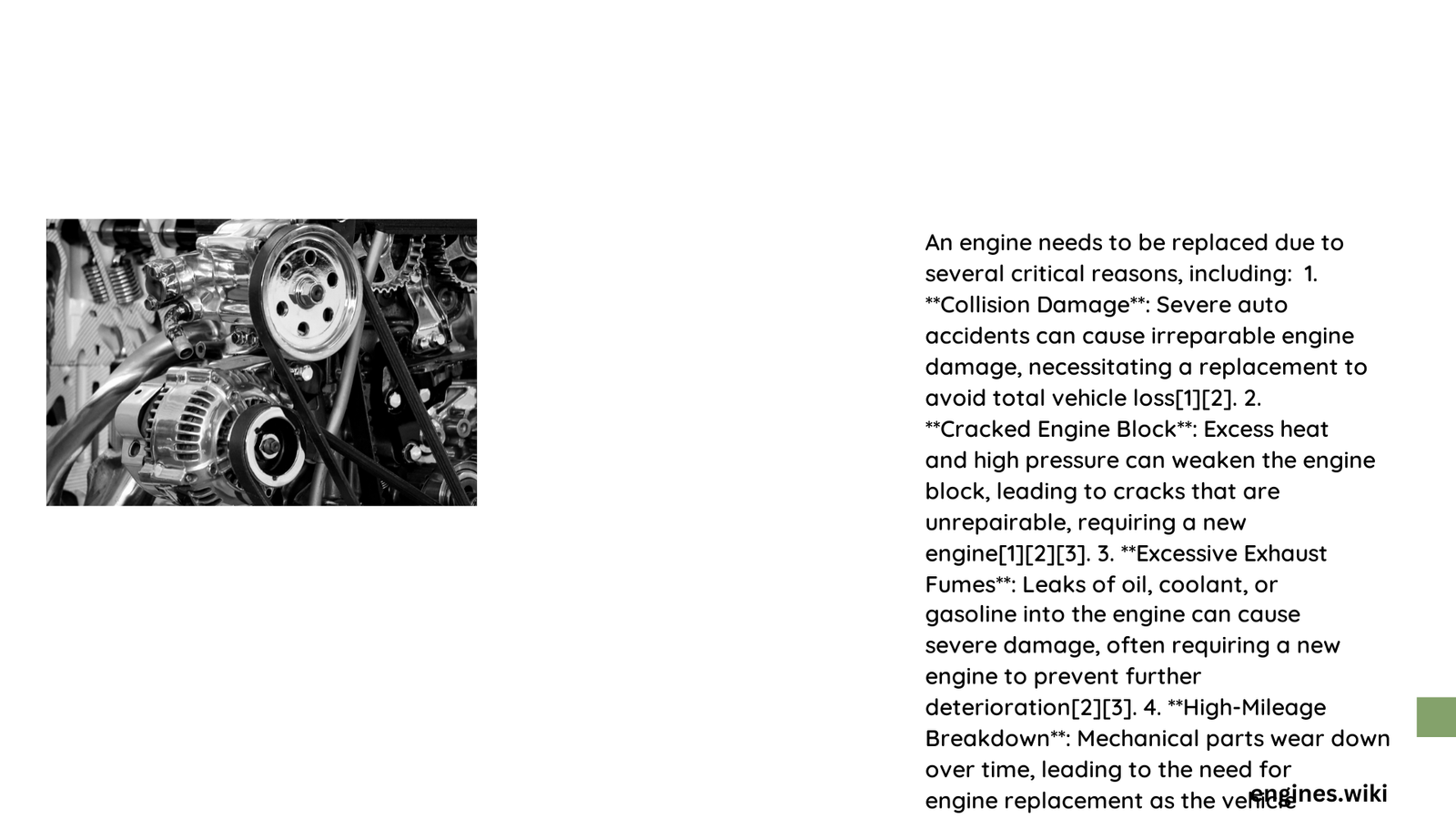Why Would an Engine Need to Be Replaced: A Comprehensive Analysis
Summary Overview
Vehicle engines represent complex mechanical systems vulnerable to multiple failure modes that can necessitate complete replacement. Understanding the intricate reasons behind engine replacement helps vehicle owners proactively manage maintenance, prevent catastrophic failures, and make informed decisions about their automotive investments. From structural damages to thermal stress and mechanical wear, multiple factors contribute to scenarios where engine replacement becomes the most cost-effective and safe solution.
What Causes Structural Engine Failures?
Structural engine failures represent a critical scenario where replacement becomes inevitable. These failures typically manifest through:
- Connecting Rod Damage: Broken or severely damaged connecting rods compromise engine integrity
- Crankshaft Fractures: Complete crankshaft failure renders the engine non-functional
- Camshaft Destruction: Severe camshaft damage prevents proper valve operation
Quantitative Breakdown of Structural Failures
| Failure Type | Percentage of Total Engine Failures |
|---|---|
| Connecting Rod Damage | 6-8% |
| Crankshaft Fractures | 4-5% |
| Camshaft Destruction | 3-4% |
How Do Mechanical Errors Contribute to Engine Replacement?
Mechanical errors often result from:
- Improper torque application
- Incorrect fastener installation
- Inadequate maintenance procedures
Mechanics can inadvertently cause failures through:
– Under-torquing critical components
– Misaligning engine parts
– Neglecting precise installation protocols
What Role Does Oil Consumption Play in Engine Replacement?
Excessive oil consumption signals potential internal engine degradation:
- Normal Oil Consumption: Less than 1 quart per 1,000 miles
- Excessive Consumption: More than 1 quart per 1,000 miles
Indicators of problematic oil consumption include:
– Blue-tinted exhaust smoke
– Consistent low oil levels
– Decreased engine performance
How Does Temperature Impact Engine Longevity?
Temperature thresholds critically influence engine health:
- Safe Operating Temperature: 195°F – 220°F
- Critical Temperature: Above 240°F
- Potential Damage Range: Sustained temperatures exceeding 250°F
Consequences of prolonged overheating:
– Cylinder head warping
– Engine block cracking
– Coolant system failure
What Are the Financial Implications of Engine Replacement?
Cost considerations for engine replacement include:
- Labor Rates: $100 – $150 per hour
- Total Labor Time: 10-15 hours
- New Engine Cost: $3,000 – $7,000
Preventative Maintenance Strategies
To mitigate engine replacement risks:
- Regular oil changes
- Consistent cooling system maintenance
- Timely mechanical inspections
- Address warning signs immediately
Conclusion
Engine replacement represents a significant automotive investment requiring careful evaluation of mechanical, thermal, and financial factors. Proactive maintenance and early problem detection can substantially reduce the likelihood of complete engine failure.

